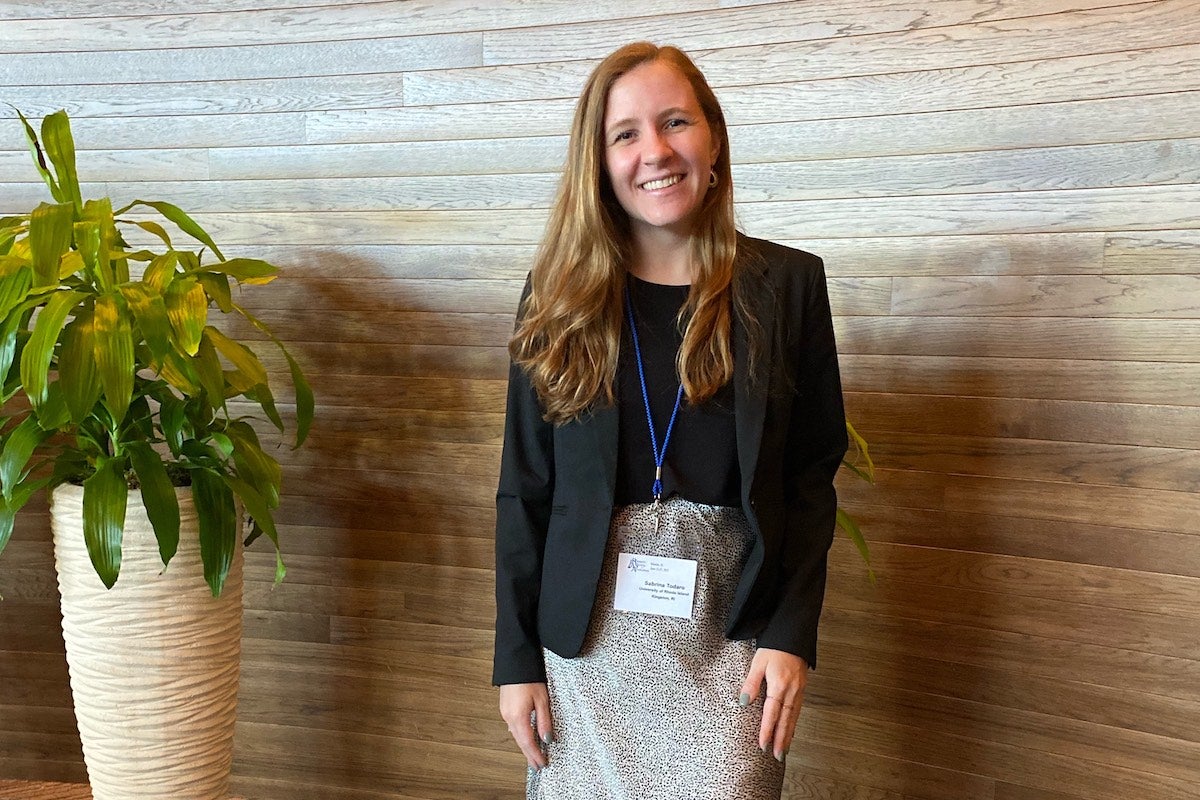University of Rhode Island psychology Ph.D. candidate Sabrina Todaro will measure the degree to which adults 18 to 25 are using “protective behavioral strategies” when engaging in both alcohol and cannabis in a study funded by an F31 grant from the National Institutes of Health. She aims to assess the use of protective behavioral strategies on days when co-use occurs relative to days when only alcohol or cannabis is used, and how that may be related to the level of use and consequences experienced.
Researchers typically define “protective behavioral strategies” as harm reduction tactics that individuals employ when using alcohol or cannabis, such as allocating a designated driver, periodically drinking water, etc. However, there is no existing measure of “PBS” for when individuals engage in multiple substance use, according to Todaro.
“What we do know from the literature is that co-use occasions are associated with greater negative consequences,” said Todaro, noting that since protective behaviors are helpful in reducing substance use and consequences for alcohol or cannabis separately, she is interested in assessing how helpful they are in instances of co-use.
Because co-use is common among young adults, Todaro stressed the importance of funding research that examines harm reduction approaches, such as PBS. She hypothesizes there is a lower use of PBS on co-use occasions relative to single-use occasions, despite the risk of increased consequences from co-use.
Todaro’s research sources data from a pool of 123 college students, who filled out phone surveys over the course of four consecutive weekends, recording the types of PBS they used, who they were with, their location, and whether they experienced negative consequences as a result of alcohol, cannabis or co-use. This ecological momentary assessment, which allows data to be gathered in the moment, is especially important for substance use to capture the behaviors and experiences that surround the use in the participant’s natural environment.
The level of combined usage is observably higher for college students, who are more likely to engage in cannabis and alcohol than any other substances, said Todaro, who is using multi-level modeling to analyze the data. This method of analysis provides insight on “how PBS and substance use may differ person to person, and day to day,” Todaro said. “With this approach, we’re getting a lot more information as to what’s going on for specific occasions of co-use, relative to single use.”
Overall, the findings of the study will help researchers identify contributing factors to co-use occasions, such as certain social settings and environments, and to develop methods of harm reduction based on those findings.
Funding from the NIH F31 award will assist Todaro with tuition payments, any travel expenses associated with presenting her research, and any fees for training opportunities like statistics and methods workshops that will aid in the completion of the project and her training as a pre-doctoral researcher. Todaro joins the recent success URI’s Department of Psychology has had in obtaining these prestigious awards.
# # #
This article was written by Samantha Melia, a senior journalism and political science major at the University of Rhode Island and an intern in the Department of Marketing and Communication.

